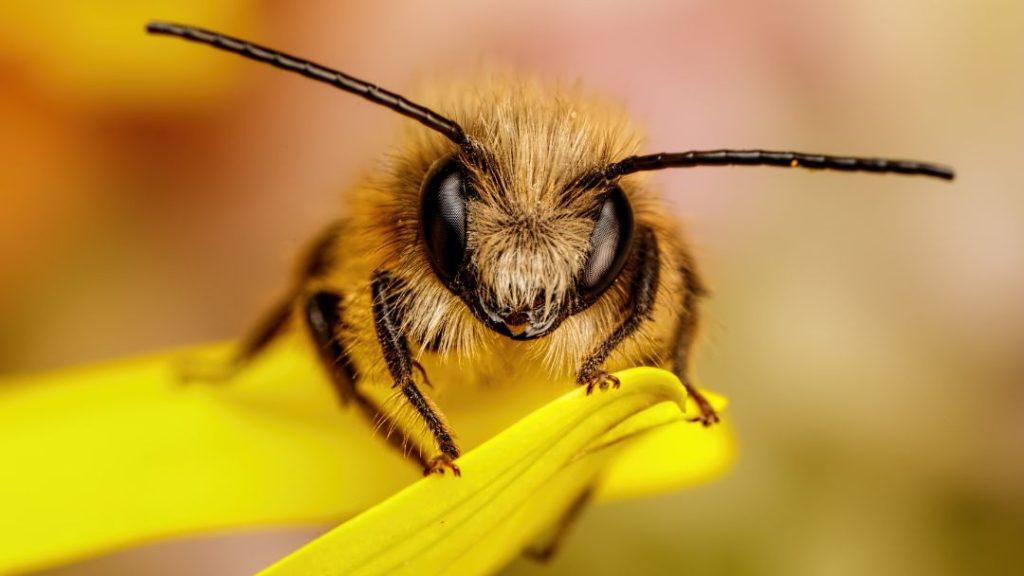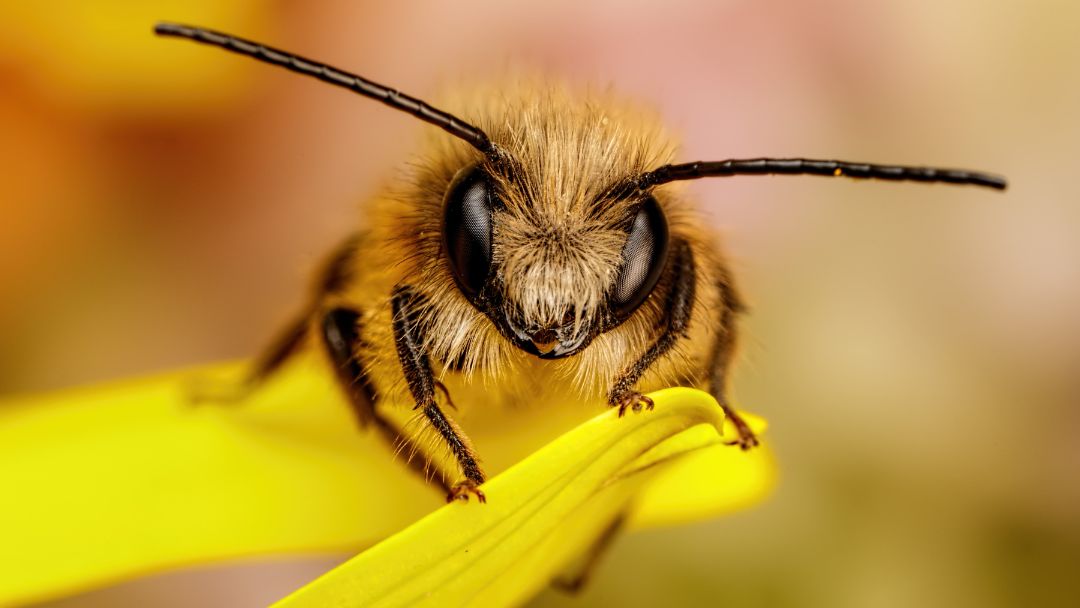Why Are Mason Bees Called Mason Bees?
Do you know there are more than 300 species of mason bees around the world? Approximately 140 types of mason bees live in North America. You can find these temperate habitats in orchards, gardens, and allotments. But why are mason bees called mason bees?
Mason bees are called mason bees because of their unique mud build behavior. These tunnel-nesting solitary pollinators use damp mud with a high clay content to construct their nests.
This blog post will give a complete about mason bees. Now, let’s get right into it!
Why Are Mason Bees Called Mason Bees?
“Mason” means a skilled worker who makes or builds things with a specific tool or object.
Mason bees are called mason bees because they do masonry work. Masonry works means the craft of building a structure with some special tool or material.
A honey bee colony builds a beeswax or wax comb to store honey and pollen. But mason bees have a different nest structure.
How Do Mason Bee Houses Work?
Females of mason bees use tubes to store their pollens and eggs. The diameter of this nest tunnel is between 5/16” and 3/8”. Each tube measures around 5″ to 7″ in length.
The entire tube is a combination of several sections. Mason bees first add a loaf of pollen and nectar.
Then, they lay an egg. Finally, these solitary bees add moist clay-rich mud to seal the openings.
Again, mason bees add a loaf of pollen & nectar, lay an egg, and finally fill it with mud. They continuously follow the same pattern until the entire tube is filled.
Generally, each nest tunnel or tube contains 5-6 eggs. Each section of the tube covers around 1-1.5 inches of space. Their unique mud build behavior leads to their common mason bees.

Why Are Mason Bees Called Solitary Bees?
Do you know around 90% of bees are solitary bees? Only 10% of bees are honey bees and bumble bees. There are more than 200 species of solitary bees.
Mason bees are called solitary bees because they are not used for honey bee production like honey bees or bumble bees. Plus, they don’t live in any beehive.
This special type of bee lives alone. They don’t have any queens. Only female bees help crops for pollination. Male bees are only for impregnating the female bees.
Mason bees are well-known for their excellent pollination. They are not picky pollinators. Their pollination efficiency is 120 higher than honey bees.
This special bee collects pollen and nectar from any plants close to their house. They are super active even during cloudy, rainy days.
Beekeepers build mason bee houses to pollinate their native plants. Mason bees are great for successfully pollinating different crops, such as early-blooming shrubs, different lentils, potatoes, okra, tomatoes, eggplants, cucurbits, almonds, plums, apples, etc.
They are called solitary bees because they can help you to grow more food. Mason bees, indeed, have become increasingly important components of native plant communities, human health, and the natural world. Beekeepers used them in their spring gardens, farms, and orchards.
Difference Between A Mason Bee House And Honey Bee House?
Do you think a mason bee house and a honey bee house are the same? If not, what are the differences between these two nests? Let’s figure out them!
| Specification | Mason Bee House | Honey Bee House |
|---|---|---|
| Purpose | Provide shelter for solitary Mason Bees | House and manage a honey bee colony |
| Nesting Structure | Small tubes or cavities for individual bee nests | Complex boxes, frames, and supers for the colony |
| Colony Size | Each nesting tube houses one female Mason Bee | Thousands of bees in a single colony |
| Hive Complexity | Simple structure with individual nesting sites | Complex structure with multiple hive components |
| Maintenance | Minimal maintenance; clean nests occasionally | Regular hive inspections, care, and honey extraction |
Purpose
Mason bees need a house to keep themselves safe from pests, diseases, and predators.
It is best to put out the mason bee house when the blossoms are going to happen soon.
The house must be located in a safe area where high winds and rain can’t reach.
On the contrary, honey bees need a shelter with enclosed spaces to establish a colony.
Honey bees will store honey and wax inside the house. Plus, a honey bee house works for pollination services and breeding honey bee populations.
Nesting Structure
A mason bee house contains only small tubes or cavities. Beekeepers usually keep two nesting tunnels for every female mason bee.
Plus, keeping three male cocoons for every two female cocoons is necessary. It ensures a safe mating. A single mason bee house can’t have more than 25 female and 37 male cocoons.
You can keep up to 50 tubes in a single mason bee house to accommodate 25 female bees. A single cocoon costs around $1 to $2. You can make up to 30 tubes in a one-liter milk carton
In contrast, a honey bee house consists of several boxes, frames, and supers for the colony. A standard honey bee box is 22 inches long, 16 inches wide, and 10 inches tall.
Each hive box has 10 frames. The average dimension of a honey bee hive is around 2.5 square feet.
An entire honey bee house can accommodate up to 80,000 individual bees. The minimum a normal one can hold is 20,000 individual bees.
A honey bee house contains two full-depth supers to store honey and prevent overcrowding inside the hive. It also has one or two brood boxes for your queen to lay as many eggs as she can.
Colony Size
The number of mason bees in a single house will vary. It depends on the bees’ activity and the available space.
Mason bees live alone. The female bees need only male bees for mating. Their average lifespan is 1 month. They lay 1-2 eggs daily. Male bees have a shorter lifecycle than females.
On the other hand, a honey bee house consists of three types of adult bees: only one queen, several hundred to several thousand drones, and 20,000 to 80,000 female worker bees.
Each colony has only one queen bee who lays eggs, feeds larvae, and controls the hive’s activities using a chemical scent. She can lay up to 2,000 eggs daily.
Worker honey bees collect the pollen & nectar, feed the queen, clean and & maintain the nest, and make the wax. The male honey bees are only used for mating with the queen.
Maintenance
A Mason bee house requires minimal maintenance. You just need to clean the nesting sites occasionally.
Beekeepers usually clean mason bee houses during the months of October and December. During this period, there is no chance of any emergence from their cocoons.
However, you can’t clean the house if there is any mud inside it. Once you see no mud sign, gently wipe the cocoons from the bee nesting tubes.
There are fewer issues of pests and diseases, too. But it is best to keep the nest clean and dry to protect bees from mold, mites, and wasps.
A honey bee house requires regular monitoring. Expert beekeepers usually recommend cleaning the beehive once a week. Too much frequent cleaning may stress the honeybee colony.
You can use washing soda (sodium carbonate) to clean honeybee hives. If you want to reuse the frames, make sure to wash them with bleach before reusing them in the beehive.
Are Mason Bees The Same As Carpenter Bees?
Both mason bees and carpenter bees are solitary (non-hive-dwelling) bees. Many people call mason bees the cousin of carpenter bees.
Carpenter bees are larger than mason bees. The abdomen of a mason bee is around ¼-inches to ½-inches in diameter. In contrast, carpenter bees have a ½-inches to 1½-inches of diameter around their abdomen.
Carpenter bees have a smooth, black, and shiny abdomen. In contrast, mason bees have a fuzzy abdomen with long red-brown hairs.
Mason bees are about 10 to 16 mm long, whereas carpenter bees are 19 to 25 mm long. The mandibles of mason bees are not as strong as carpenter bees. Hence, they can’t cut or chew wood to build new homes.
Carpenter bees are long-lived creatures. The males have a lifespan of 1 year, whereas females can live up to 2-3 years. Mason bees have an average lifecycle of 6-8 weeks.
Both mason bees and carpenter bees are excellent pollinators. They pollinate around 15% of our agricultural crops. But too many carpenters are bad because they can damage wooden structures.
Are Mason Bees Endangered?
There are more than 4,000 genera (types of bees) in the world. Out of these bee species, mason bees cover around 7% of the population.
According to the Backyard data in six US states, many states have a reduced number of native mason bees than prior years.
Some species of mason bees are declining in many states in North America because of the widespread use of pesticides and the loss of flowering plants.
Hoplitis orthognathus is one of the rarest species of mason bees. They are only available in Baker County, OR, Idaho County, ID, and Asotin County, WA.
Another rare mason bee is the red-tailed mason bee (Osmia bicolor). They are primarily seen in southern and eastern England. This fascinating species is commonly found in urban environments, especially gardens and parks.
Final Words
Apart from man-made houses, you can find mason bee houses in hollow sticks, branches, and insect holes in trees. These tunnel-nesting solitary pollinators increase fruit production. They are vital to our food production and ecosystem.
Mason bees are 120 times more efficient pollinators than honey bees. They use pollen-gathering tactics, which increases their pollination success rate by up to 95%. Hopefully, you got a clear overview of the question, “Why are mason bees called mason bees?”

